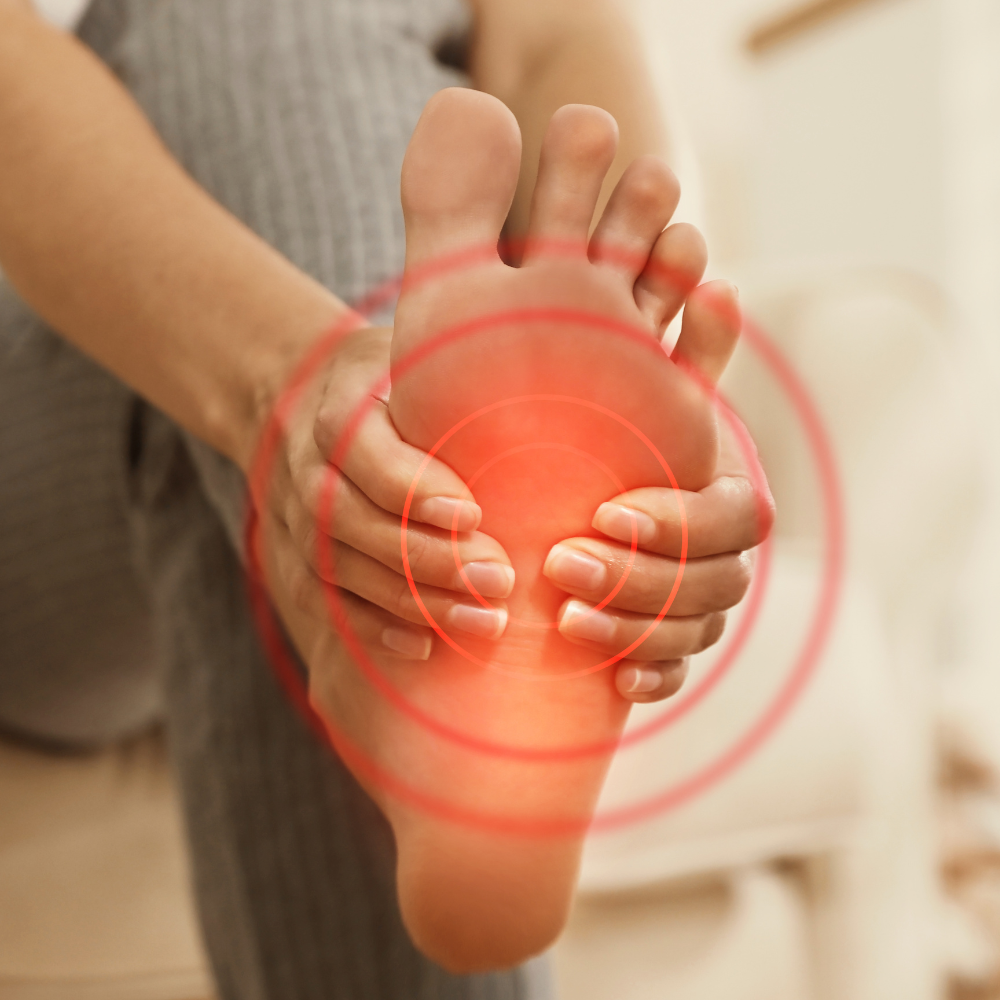How many of us have jumped out of bed in the morning to only find a very painful landing that can be extremely painful and only get worse as the day goes on? Foot pain can easily be the most annoying or aggravating part of our days especially when we think it could just be tightness from sleeping. Here’s some information on a condition that could be causing the pain that so many of us are experiencing as we jump out of bed and get ready for our day.
Plantar Fasciitis is a condition that is very common that can affect around 1-10 people and one of the biggest drivers of heel and foot pain. The plantar fascia is a thick band of connective tissue on the bottom of the foot that helps stabilize and absorbs impacts on the foot as we walk, run, or jump. Plantar fascia is connected to the bottom of your calcaneus or better known as the heel bone and runs all the way to the bottom of your toes. This can commonly cause symptoms like stabbing heel pain, tightness in the middle of the foot, and pain in the mornings that can go away but will come back after standing or walking for a period of time.
Some causes for this condition are poor walking mechanics, chronically tight calf muscles, wearing heels or unsupportive shoes, obesity, age, and the most common is overuse. Overuse can be described as even having a job that requires standing or walking for prolonged periods of time or can be as simple as not stretching before exercising.
There are many ways to alleviate this pain such as;
Stretching the calf muscles.
A common stretch technique is placing your toes against the wall and leaning closer to the wall. Another technique is to dangle your heels off the end of the stairs (please use the bottom stair not the top) and allow your heels to fully dangle off and feel the stretch in your calves.
Rolling the bottom of your foot out
A great way to roll the bottom of your foot to lengthen the shortened plantar fascia is by putting a water bottle into the freezer and letting it freeze. After it has frozen, place a small towel or washcloth over or around the water bottle and roll the water bottle under your foot to provide a cooling sensation which will decrease inflammation as well as stretch out the fascia.
Strengthen intrinsic foot muscles
Intrinsic foot muscles are the small muscles in the bottom of your foot and into your toes. One way to strengthen them is by placing a small towel under your feet and scrunching the towel up only using your toes. Be careful to not lift your heel or foot off the ground and to be only using the toes! It should start flat and work its way toward your foot in a scrunched up position!
Last but surely not least, be careful and if the pain does not go away with these simple efforts, seek out your local health care providers for more information and techniques to help you with this condition! If not handled it can cause chronic heel pain that could lead to surgery if not treated correctly.

